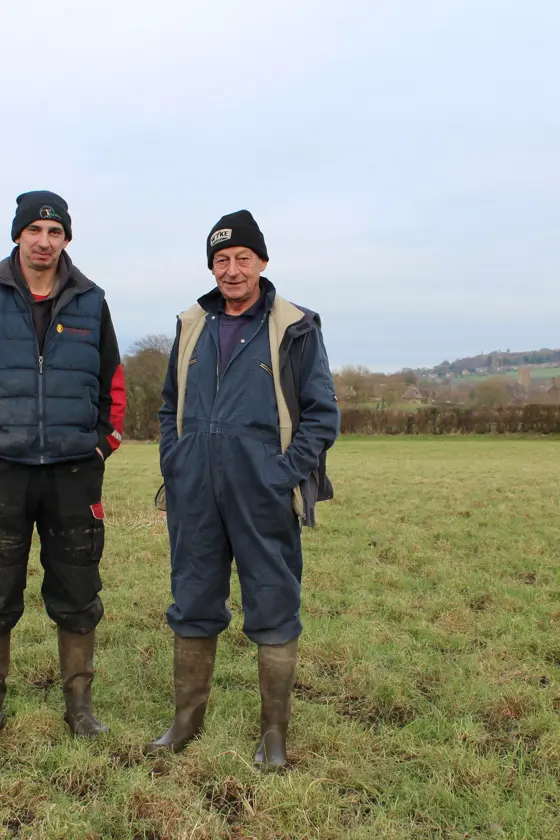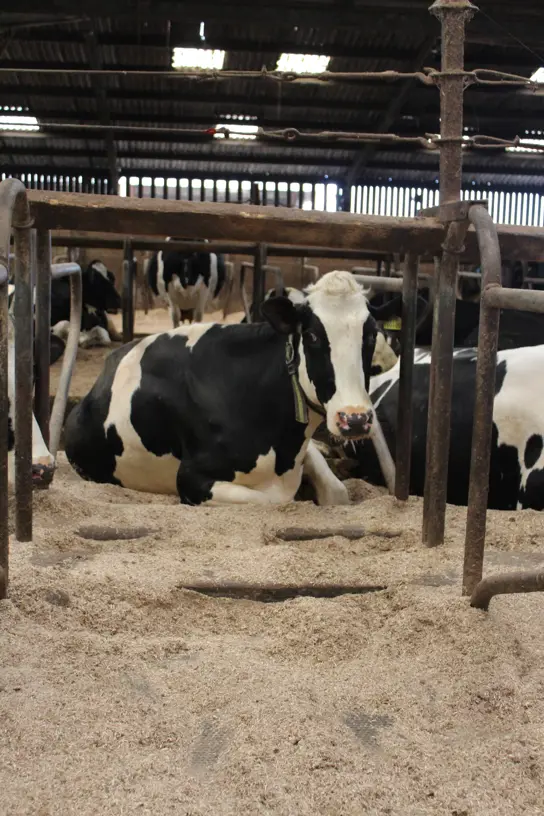Manor Farm

Simple Grazing System Supports High Yields on Robots
Using a Grazeway Gate to automatically draft low yielders out to grass has created a simple, hybrid system that supports high levels of production at Manor Farm, Somerset.
Robotic milking ticks all the boxes for the Holloway family, allowing them to graze cows, work more sociable working hours, and boost yields to 11,000 litres a cow a year.
The Holloways made the decision to move to robotic milking in 2021 when their tri-bone milking parlour reached the end of its life. For Andrew and dad, Richard, robots were the only solution. “Labour was going to be an issue - there was a lack of people wanting to do the job”, Andrew says. Richard agreed: “We could have invested in a parlour and found no one to go in it”. It was robots or not having the cows.”
They didn’t waste time, immediately choosing Lely Center Yeovil. “We’d heard good things about Lely so we didn’t look elsewhere,” Andrew says.
Grazing cows was non-negotiable with both Richard and Andrew keen to have cows out.
Payment bonuses were also available through their milk buyer, Wyke Farms for grazing for 180 days and producing more than 3,000 litres per cow per year of milk from forage.
After visiting a number of set-ups, the family worked with the team at Lely Center Yeovil, including Project Coordinator, Alistair Cumings to work out how to retro-fit two Lely Astronaut A5 robots into existing sheds. A Grazeway gate was included in the plan to automatically filter cows out to grass. Delays in funding through the Farming Equipment and Technology Fund meant it took until September 2023 for the robots to be up and running.
Richard says: “Alistair was brilliant during the set-up process. He managed to squeeze two robots into the existing buildings. He knew what would work, like taking out a couple of panels from behind the water troughs to encourage timid heifers to see the robot and encourage them to visit. We wouldn’t have thought of that. He’s a clever chap.”
The work required was relatively straight-forward: one of the robot rooms was housed in part of the old parlour with another put in the collecting yard. The dispersal yard was also dug up for slurry channels.
The cows adapted well to the robots and quickly learnt how to use the Grazeway Gate.
The Grazeway is set up so cows that are 150 days calved and pregnant, or barren will be automatically filtered out to grass after milking. They can then choose when they want to come back in via a ranch gate.
This means the high yielders have more space inside and more opportunity to visit the robots, which aids production. At the same time, the lower yielders are able to utilise cost-effective grazed grass. Cows are set-stocked across 30 acres which is split into three fields.
Jon Eldridge, Farm Management Support for Lely Center Yeovil, designs the diet at the feed fence to deliver 70% of the total herd’s requirements when grazing. This is adjusted according to demand, which reflects weather and grazing conditions. Cows are fed to yield through the robot, with close attention paid to concentrate and feed allocations to optimise milk from forage.
Jon explains: “When we supplement concentrate, we factor in a high level of dry matter from forage - so we factor in 15kg of forage dry matter as a minimum and then supplement from that. That means you’re not oversupplying and they have appetite to eat forage.”
A Lely Juno, automatic feed pusher ensures the ration is pushed up multiple times a day which also supports forage intakes.
Both forage quality and volume suffered as a result of last year’s challenging growing conditions which has been reflected in milk from forage. Andrew and Richard are hopeful that a better forage making season will push milk from forage back above 3,000 litres, and drive production further. An earlier turnout would also help.
The fact the herd was averaging 42kg of milk per head per day during last year’s grazing season, highlights the huge potential within system. In fact, average production has increased from 9,500 litres a cow a year to 11,000 litres since the robots were installed in September 2023. Richard says it took 25 years for the herd to increase to 9,500 litres from 4,500 litres through feeding and breeding on the conventional milking system. Andrew highlights that the herd is now producing 18% more milk with 16% less cows, because cows are better able to express their genetic potential.
At the same time, the team is able to operate more sociable working hours. The robots mean Andrew can have the kids in the morning whilst wife, Victoria does the horses. He’s out at 7.30am rather than 4am when the cows were milked through the parlour, and finishes at 6pm.
The farm team includes Andrew, Richard, one full-time tractor driver and a general farm worker who works every morning and a few afternoons a week. Andrew estimates they’ve saved about four hours a day or half a labour unit by reducing milking requirements, whilst the day is also easier. He believes the whole system should make it easier to find staff when the need arises, whilst also creating a more attractive option should his children Maisie, six and Bertie, three choose to farm.
BOX: Farm Facts
• Manor Farm, Stoke-sub-Hamdon, Somerset.
• Andrew Holloway farming with parents Richard and Louise and wife, Victoria. Louise and Victoria do the farms books.
• 550 acres farmed including 200 acres of arable.
• Predominately permanent pasture.
• 130 cow Chiselborough herd of pedigree Holstein Friesians.
• 11,000 litres a cow a year at 3.82% fat and 3.33% protein.
• 2,191 litres milk from forage per cow per year (versus 3,265 litres in 2023).
• 3.3 average robot visits
• 167,000 cells/ml average somatic cell count.
• The ration includes grass and maize silage, rape and wheat.
• Sexed and beef strategy using Aberdeen Angus and Limousin bulls. Beef calves sold privately before 42 days.

Inquiry Form
Speak to our team
Learn how Lely solutions can work for your grazing herd!